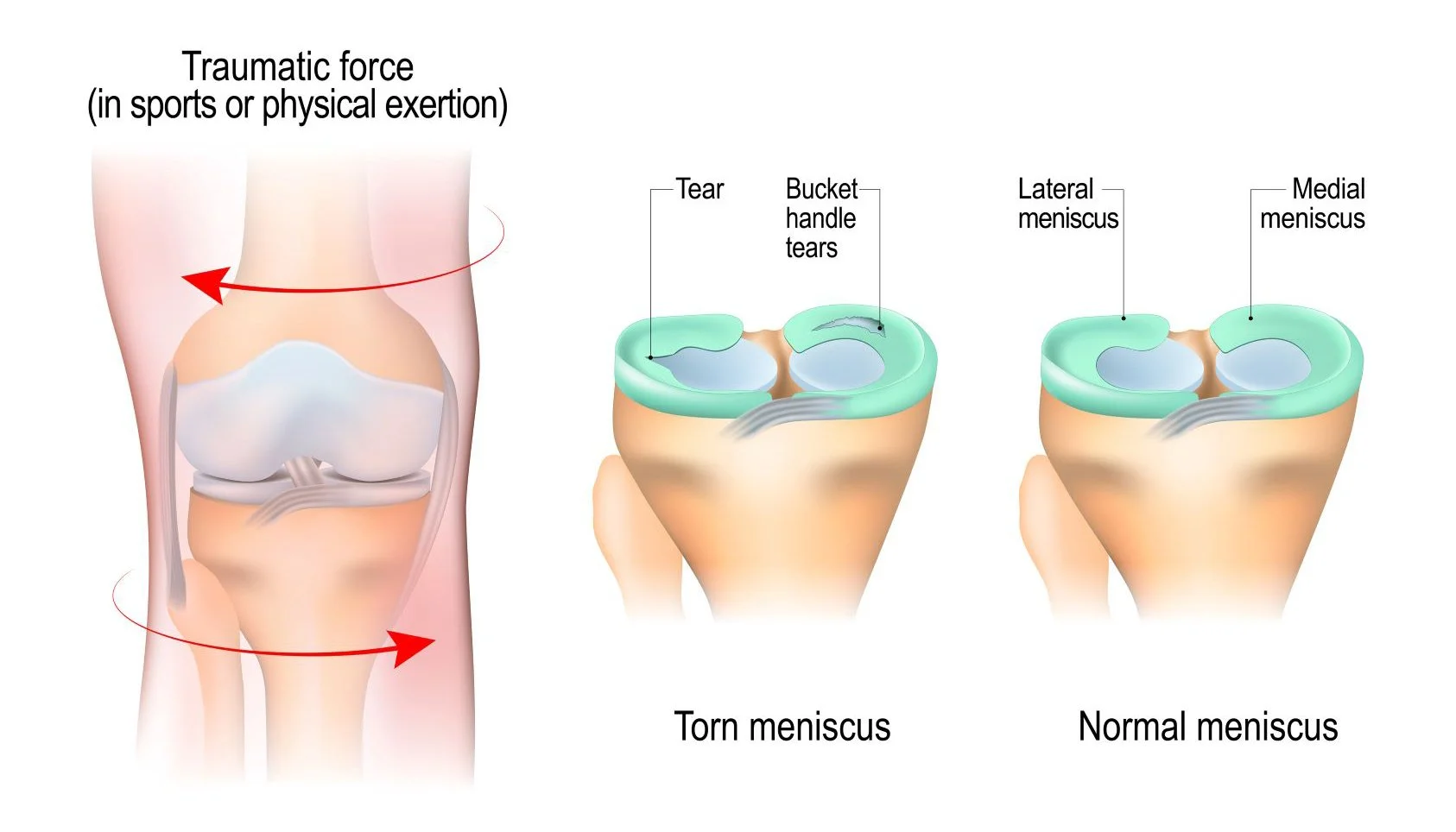Why Is My Knee Locking Up?
Is your knee locking or catching? Are you unable to bend or fully straighten your leg?
If this sounds familiar, you might be dealing with a meniscus tear — one of the more common causes of a locked knee that Dr. Sterett and his team see at Vail-Summit Orthopaedics & Neurosurgery.
Let's take a look at the causes and symptoms of meniscus tears and how Team Sterett can help you make a full recovery.
How Does a Meniscus Tear Happen?
The meniscus is a soft layer of cartilage that acts as a shock absorber to the knee joint, protecting it from excess wear. You actually have two of these in each knee, hard at work reducing the everyday stress we put on those joints.
Many times, a meniscus tear is the result of a forceful twist or direct hit while playing sports, but it's also quite common in older adults from years of wear and tear.
Meniscus tears can be caused by:
Forceful twists or sudden stops in sports like soccer, tennis, and skiing
Direct blow to the knee like in football or hockey
Deep squatting with heavy weights
Getting older — degenerative tears can happen from the tissue weakening over time
It's not uncommon for a meniscus tear to accompany another ligament injury, like an ACL tear. Read more about combined ACL and meniscus tears.
Did I Tear My Meniscus?
The only way to know for sure if you are dealing with a meniscus tear is by seeing an orthopaedic specialist for a physical examination, which may include X-rays or an MRI.
However, here are some of the more common symptoms, which can come on immediately or develop over a few days:
Pain in the knee joint
Popping sound or sensation
Locked knee or unable to fully bend or straighten it
Swelling
Feeling unstable on your knee
The "locking" that some patients experience happens when:
A piece of the torn cartilage falls off and floats within the knee
The tear is large enough to fold over, and the flap gets stuck in a place where it doesn’t belong
In both instances, bending or straightening the knee can be limited as it “catches” on these rogue pieces of cartilage.
Treatment for a Torn Meniscus
Dr. Sterett and his team will consider the following factors when developing your personalized treatment plan:
The size and pattern of the tear
The location of the tear
Your age and overall health
Your desired activity level
Some tears may heal well with conservative treatments, which include:
Rest or activity modification
Ice
Over-the-counter pain relievers
Physical therapy
If these measures fail to provide relief or the tear is severe, Dr. Sterett may recommend surgery to repair or remove the damaged tissue. The good news: meniscus surgery has a high success rate, with 85% of patients returning to their pre-injury activity levels.
Learn more about meniscus surgery and recovery.
Dr. Sterett Is the Go-To Doctor for Meniscus Injuries in Eagle County
Contact Dr. Sterett today if you are experiencing symptoms of a torn meniscus. He and his team at Vail-Summit Orthopaedics & Neurosurgery are the leading experts in knee injuries and will work to get you back to performing at your desired activity levels.
Schedule your appointment with Team Sterett in Vail or Edwards by calling (970) 476-7220 or submitting an online appointment request form.



